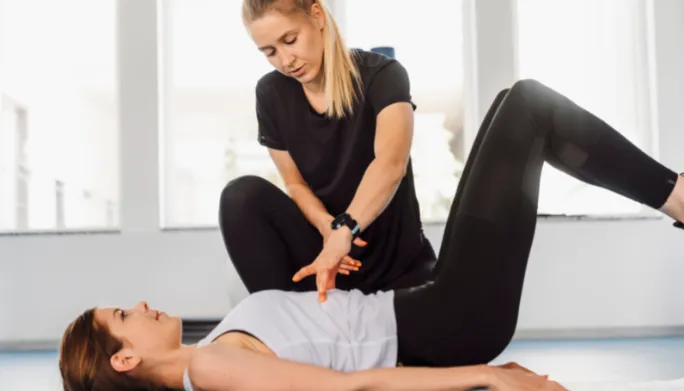Parkinson’s (PWR Moves) In San Antonio

What is Parkinson’s Disease?
Living with Parkinson’s Disease (PD) presents unique challenges, but with the right treatment and exercise program, individuals can effectively manage their symptoms and enhance their overall well-being. Parkinson’s Wellness Recovery (PWR!) is a specialized set of PD-specific exercises designed to address the specific skills and issues affected by the disease. In this article, we will explore how PWR! exercises, offered by physical therapists, can help mitigate symptoms, rebuild functionality, and improve the quality of life for individuals with Parkinson’s Disease. Whether at a seated, supine, prone, standing, or quadruped position, PWR! exercises are tailored to individual needs and can be adjusted for different levels of functionality.
Targeted Exercises for Parkinson’s Disease in San Antonio
PWR! exercises for Parkinson’s Disease are designed to specifically target the skills and issues affected by PD. These exercises address common symptoms such as muscle rigidity, tremors, balance difficulties, and reduced mobility. By incorporating a range of positions and movements, PWR! exercises aim to rebuild functionality and mitigate the impact of the disease.
Seated exercises focus on improving core strength, range of motion, and coordination. Supine and prone exercises help promote flexibility, body alignment, and mobility. Standing exercises work on balance, gait training, and functional movements. Quadruped exercises target stability, coordination, and motor control. The versatility of PWR! exercises allows for individualization and customization based on the person’s specific needs and capabilities.
The Benefits of PWR! Exercises for Parkinson’s Disease
PWR! exercises offer numerous benefits for individuals with Parkinson’s Disease, regardless of their level of functionality. Some key benefits include:
- Improved Mobility and Motor Control: PWR! exercises focus on enhancing coordination, flexibility, and motor skills, allowing individuals to regain control over their movements and improve overall mobility.
- Enhanced Balance and Stability: Parkinson’s Disease can disrupt balance and increase the risk of falls. PWR! exercises incorporate specific techniques and movements to improve balance, stability, and reduce the likelihood of falls.
- Increased Strength and Endurance: Muscle weakness and fatigue are common challenges in Parkinson’s Disease. PWR! exercises target muscle groups to increase strength and endurance, helping individuals perform daily activities with greater ease.
- Symptom Management: PWR! exercises can help mitigate the impact of symptoms such as rigidity, tremors, and bradykinesia (slowed movement), allowing individuals to experience greater comfort and control.
- Mental and Emotional Well-being: Regular exercise has a positive impact on mental health. PWR! exercises can reduce stress, anxiety, and depression commonly associated with Parkinson’s Disease, promoting overall well-being and quality of life.
The Role of a Physical Therapist in PWR! Treatment
A physical therapist with expertise in Parkinson’s Disease plays a crucial role in implementing the PWR! exercise program. They conduct a comprehensive evaluation of the individual’s needs, symptoms, and functional limitations. Based on this assessment, the physical therapist develops a personalized treatment plan that incorporates PWR! exercises to address specific challenges and goals.
The physical therapist guides individuals through the exercises, ensuring proper form, safety, and progression. They provide valuable education on movement strategies, compensatory techniques, and lifestyle modifications to optimize the benefits of the PWR! program. Additionally, the physical therapist monitors progress, makes adjustments as needed, and provides ongoing support to help individuals maintain motivation and adherence to the exercise regimen.
The Benefits of PWR! Exercises for Parkinson’s Disease
PWR! exercises offer numerous benefits for individuals with Parkinson’s Disease, regardless of their level of functionality. Some key benefits include:
- Improved Mobility and Motor Control: PWR! exercises focus on enhancing coordination, flexibility, and motor skills, allowing individuals to regain control over their movements and improve overall mobility.
- Enhanced Balance and Stability: Parkinson’s Disease can disrupt balance and increase the risk of falls. PWR! exercises incorporate specific techniques and movements to improve balance, stability, and reduce the likelihood of falls.
- Increased Strength and Endurance: Muscle weakness and fatigue are common challenges in Parkinson’s Disease. PWR! exercises target muscle groups to increase strength and endurance, helping individuals perform daily activities with greater ease.
- Symptom Management: PWR! exercises can help mitigate the impact of symptoms such as rigidity, tremors, and bradykinesia (slowed movement), allowing individuals to experience greater comfort and control.
- Mental and Emotional Well-being: Regular exercise has a positive impact on mental health. PWR! exercises can reduce stress, anxiety, and depression commonly associated with Parkinson’s Disease, promoting overall well-being and quality of life.
Conclusion
PWR! exercises offered by physical therapists are an invaluable resource for individuals with Parkinson’s Disease. By targeting specific symptoms and challenges, these exercises help mitigate the impact of PD, improve functionality, and enhance overall well-being. Whether performed in seated, supine, prone, standing, or quadruped positions, PWR! exercises offer versatility and can be tailored to individual needs and capabilities. With the guidance and expertise of a physical therapist, individuals with Parkinson’s Disease can regain control over their movements, enhance mobility, improve balance, and experience a higher quality of life. Embrace the power of PWR! exercises as part of your Parkinson’s treatment and embark on a journey towards enhanced functionality and well-being.


